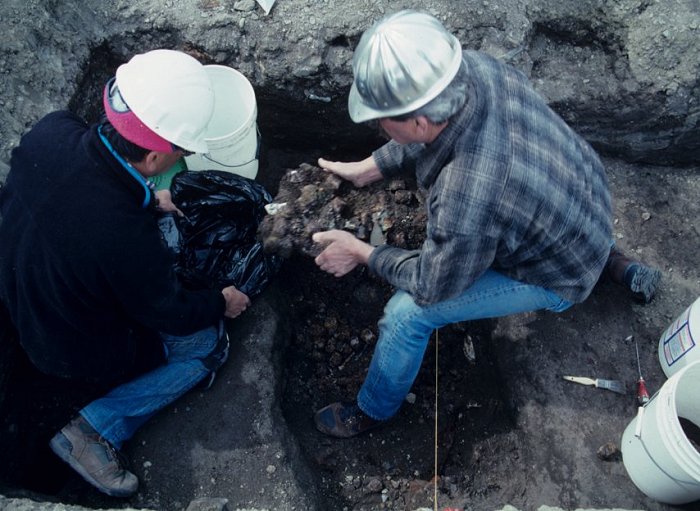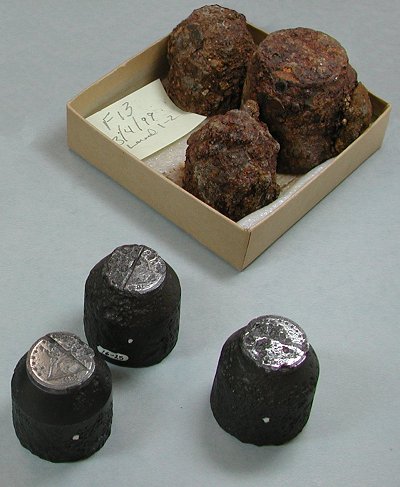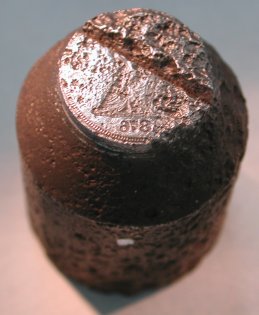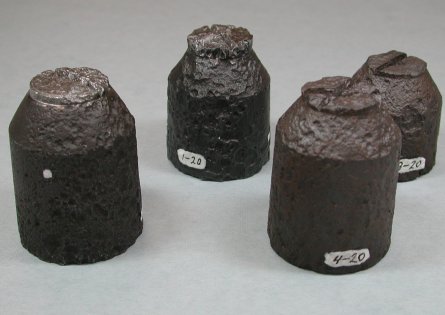Rediscovery of the first twenty-cent piece die in Carson City
It was the summer of 2002 during the American Numismatic Association Summer Seminar that I (Lane Brunner) started a journey to visit the Carson City Mint. During the awards dinner I had the fortunate
accident of sitting next to a kind, distinguished looking gentleman who was very much lost in the event. My conversation with Robert Nylen started just like most of the conversations that week between
people who had just met. As we began to chat, it was apparent that Bob was not a collector, but one of the many non-numismatists that attend the seminar. He was taking the course designed for museum
professionals with numismatic collections to manage.
Bob was still a bit taken by the level of enthusiasm and interest of the small group of dedicated numismatists that he met over the past week. It was when he shared which museum he worked at that it all
began to make sense. Bob was, and still is, at the Nevada State Museum. Of course collectors know the location as the Carson City Mint. Few places in American numismatics are as romanticized as the
Carson City Mint. It’s funny that Bob really didn’t realize how fascinated we collectors are with the history of that wonderful mint and the coins with those two Cs on the reverse. However, after a
week at the Summer Seminar surrounded by the numismatic savants that attend, Bob was a believer.
During our dinner I explained to Bob that I was keenly interested in a pilgrimage to Carson City to see the fabled 1876-CC twenty-cent piece and would be thrilled to examine it in person. Bob was
gracious and welcoming with his invitation and the plan was set into motion.
The following spring I packed up my portable microscope, digital camera, and notebook and was on my way to visit the Carson City Mint. Other than my microscope causing some curiosity with the
Transportation Safety Administration officers the short trip from Texas was uneventful.
The next morning I met Bob and he escorted me to their records collection where I spent a few hours slowly paging through the records that remained. Many years ago some of the records were lost and then
a few decades later, much to the astonishment of everyone, many records were purged and destroyed. Although few records had a direct connection to twenty-cent pieces, it was great just to spend time with
these historical documents. The greatest thrill was coming across original signatures of Mint Director H. R. Linderman.
After time with the records, it was off to see the 1876-CC. It’s here where the only disappointment of the trip occurred. Bob informed me that the display used to house the collection that contained
the famed rarity could not be easily dismantled. This was not helped along by anxious security personnel who were less than enthusiastic about some stranger wanting to see “that coin.” Nonetheless,
I still had a chance to image the coin through the display. With Bob’s help, we cobbled together some lighting and I was able to shoot some decent images. So it was not a loss after all.
I was then able to spend time with Eugene Hattori, who was the person in charge of curating the dies discovered a couple of years earlier during a survey of the land next to the current building (see
photos below)11. He showed me the five-gallon buckets containing dies soaking in WD-40 and some dies that had finished the soaking and were ready for curating.

Dies being removed from the excavation next to the old Mint

Dies of various denominations as recovered from the excavation
Later in the evening I had a chance to meet Ken Hopple, the man who was doing much of the die curating for the museum. Ken is also the Chief Coiner for the Nevada State
Museum, but that’s a different tale. We met in Ken’s shop and he shared with me the process of taking encrusted dies and removing the major debris and then finishing the surfaces. Then Ken brought out
the tray of a couple dozen nearly finished dies that represented nearly all of the curated dies up to that point.
|
 Before and after curating |
As Ken set down the tray, I reached across his arms and picked out a die and said, “Here’s a twenty-cent die!” It was an 1876 obverse die with some of the surface eroded away. There was enough die
remaining, however, to determine that this wasn’t the obverse die that struck the known specimens of the 1876-CC.
Surprised, Ken told me he and the others thought it was a quarter die and wondered how I knew it was a twenty-cent die. To this day, I am still not quite sure, but after handling hundreds and hundreds
of twenty-cent pieces, it just felt like it was a twenty-cent die and nothing else. Turns out I was right, and the museum had rediscovered its first twenty-cent die.
Ken kindly allowed me to make some polymer impressions and then he “struck” a couple in lead for me. Now I had a few die impressions to study!
The trip was a fantastic journey through history escorted by some of the nicest people I have ever met in numismatics. After curating additional dies in the following several years, a total of four
twenty-cent piece dies have been found – the obverse originally found, plus a reverse die, and two others whose design details had been completely obliterated. It was also determined at the time
that the reverse die recovered in the excavation, like the obverse, had not been used to strike any coins, as the CC mintmark position did not match any of the known coins.

 Recovered 1876 obverse die All four recovered
twenty-cent piece dies
Recovered 1876 obverse die All four recovered
twenty-cent piece dies
11Photos of the excavation courtesy of the Nevada State Museum.
